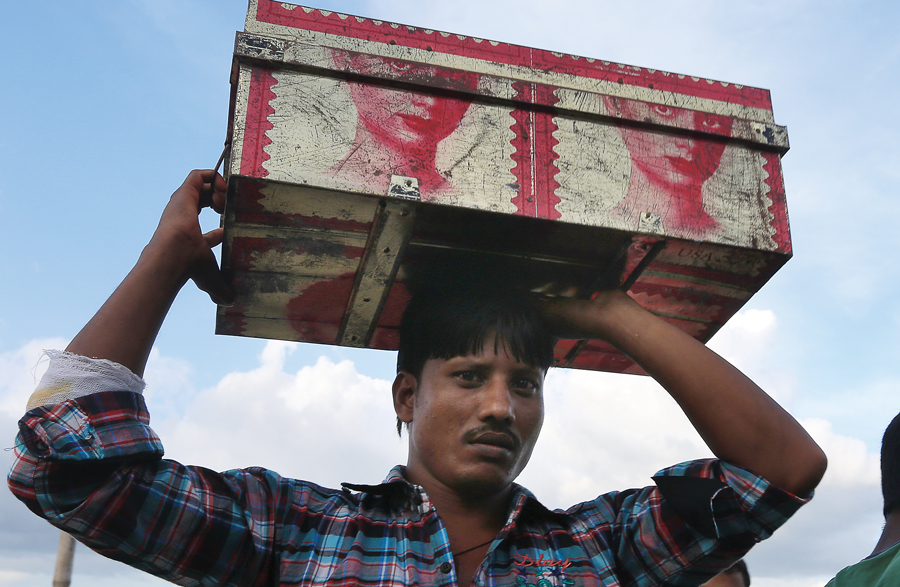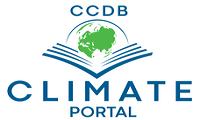A framework for engaging local communities
- Author(s): Masroora Haque
- Date of the news : 1st November, 2017

It is a known fact that climate change disproportionately affects the world’s poorest and it is the world’s poorest who are least responsible for its causes. It is also the world’s poorest who are most in need of affordable energy to light their homes, streets, schools, and businesses. In 2014, $392 billion flowed from both the public and private sectors to reduce carbon emissions and build climate resilience across the world. What portion of that finance reached the poorest communities and how well did that finance reflect their needs and priorities is a matter of question, debate, and my research. It is difficult to ascertain exactly how much international and national funding for climate related activities is reaching the world’s poorest. An investigation by the Adaptation Transparency Finance Gap Report uncovers discrepancies in accounting, lack of standardisation, and absence of national and private sector data on climate spending. Preliminary, estimates peg it at about $1.5bn between 2003 and 2016 from international climate funds. These funds reach poor communities through projects that aim to help them adapt to the negative impacts of climate change or provide them with energy. Examples of community based adaptation projects include providing farmers with flood tolerant rice seeds, constructing dykes, and mitigation projects include decentralised solar mini-grids, providing improved cook stoves to households, etc. Developed countries who are historical emitters of greenhouse gasses are obliged to provide finance to developing countries. The historic Paris Agreement signed in 2015 at the annual climate change conferences established that $100bn needs to be raised by 2020 and spent on projects that reduce carbon emissions and help developing countries adapt to the negative impacts of climate change. The Least Developed Countries (LDC) group, a bloc of the 48 most poor and climate vulnerable countries in the world, which includes Bangladesh are strong advocates of increased ambition and urgent mobilisation of climate funds. Ahead of the climate change conference this year, also known as COP23, the LDC Group organised a Ministerial meeting in Addis-Ababa in preparation for COP23. Regarding climate finance, the group had the following message to the rest of the world. The LDC Group: “Note with concern that trillions of dollars in climate finance is required to implement the NDCs of developing countries. Over $200bn is needed only for LDC adaptation actions cost to date — recognising that some LDCs have only partially costed their needs or not costed them at all; “Further note, with serious concern, the limited resources available under the Least Developed Countries Fund (LDCF) for immediate climate adaptation actions and call for urgent contributions to the LDCF; “Stress the need for facilitating access to climate finance by further streamlining and simplifying the application, approval, and disbursement processes of the Green Climate Fund and the Global Environment Facility; “Further stress that a decision must be taken at COP23 to fully integrate the Adaptation Fund into the Paris Agreement architecture.” Two years after the Paris Agreement was signed, countries are negotiating the rules by which the Agreement is to be implemented and organising efforts to raise finance for the agreed target. So far about $10.3bn has been raised in the Green Climate Fund. At COP23 in November this year, there will be a further push to raise more fund. Given the United States withdrawal from the Paris Agreement, the future of climate finance is not as smooth as countries may have hoped for. This makes it very important that the projects financed by climate funds in developing countries are effective and efficient in their reach and delivery to the world’s poorest and have a lasting impact on their lives. Research conducted by the International Institute for Environment and Development (IIED) shows that for there to be positive impact from these projects, local communities must be the central decision makers on how the climate finance is spent. Poor communities, despite their vulnerabilities and limited resources, are catalysts for sustainable actions to tackle climate change. Activities that incorporate community knowledge, support collective action, respond directly to the needs of the poor, and seek to empower all contribute to the sustainability of climate actions. How then do development practitioners, policymakers and project managers, donors go about understanding the priorities of the poor and ensuring their participation in climate action in their communities? Drawing on extensive literature on community participation, I have identified three central tenets to ensure active community participation in climate change projects that aim to build resilience of the poor. These include: Ensuring the right type and degree of participation: Most development projects require that local communities are engaged in some form or another, but ensuring the right type and degree of participation is key to ensuring meaningful engagement. My research draws on the work of Sherry Arnstein’s Ladder of Participation who classifies three degrees of participation – non-participation, tokenism, and citizenship power. Project managers need to ensure that the poor hold the power and authority to wield influence over decision-making, are partners in the projects being undertaken, and are able to manage the projects/programs in their communities. Identifying the underlying interests of community members and related stakeholders for participation: Participation, according to Sarah White’s article Depoliticising development: The uses and abuses of participation, is a means and an end. When high-level decision makers such as project managers, donors and policymakers, and local stakeholders such as local government, NGOs, and the poor are united in their interest of engaging the poor for their empowerment, climate projects have a higher chance of bringing about transformative benefits. Employing the right practices and methods to engage the poor: According to Mark S Reed’s extensive observations on community engagement in the environmental sector include: 1. Building trust with communities, learning together and addressing issues of equity 2. Including the poor in the projects from the very beginning 3. Identifying the various groups of stakeholders and engaging them equally 4. The perspective of multiple groups need to be considered when deciding the goals of the participation 5. Participatory methods need to be appropriate for the type of decisions stakeholders are engaged in 6. Highly skilled facilitation to deal with participatory process where there are competing interests and potential conflict 7. Combining local knowledge and scientific knowledge to arrive at solutions To understand how well climate projects reflect the needs and priorities of the poor, we must first design methods to understand their needs and priorities. By employing this framework, we can begin to get a clearer, more holistic picture of what the poor want and how we can help them better adapt to climate change and provide clean energy. Making a dedicated effort to include the poor in climate change projects can have a lasting impact on their lives and is ultimately an effective and efficient use of climate finance.
- Source Website: https://www.dhakatribune.com/tribune-supplements/2017/11/01/framework-understanding-engaging-local-communities
Was this post helpful?
Let us know if you liked the post. That’s the only way we can improve.

